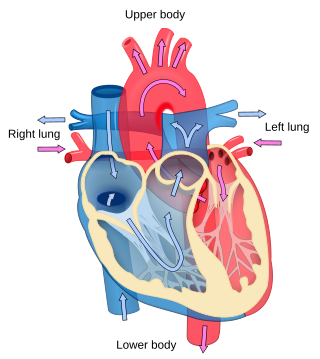
Cardiology is the study of the heart. Cardiology is a branch of medicine that deals with disorders of the heart and the cardiovascular system. The field includes medical diagnosis and treatment of congenital heart defects, coronary artery disease, heart failure, valvular heart disease, and electrophysiology. Physicians who specialize in this field of medicine are called cardiologists, a sub-specialty of internal medicine. Pediatric cardiologists are pediatricians who specialize in cardiology. Physicians who specialize in cardiac surgery are called cardiothoracic surgeons or cardiac surgeons, a specialty of general surgery.
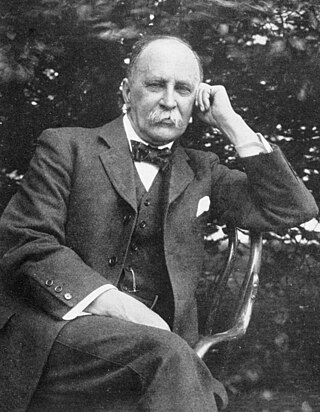
Sir William Osler, 1st Baronet, was a Canadian physician and one of the "Big Four" founding professors of Johns Hopkins Hospital. Osler created the first residency program for specialty training of physicians, and he was the first to bring medical students out of the lecture hall for bedside clinical training. He has frequently been described as the Father of Modern Medicine and one of the "greatest diagnosticians ever to wield a stethoscope". In addition to being a physician he was a bibliophile, historian, author, and renowned practical joker. He was passionate about medical libraries and medical history, having founded the History of Medicine Society, at the Royal Society of Medicine, London. He was also instrumental in founding the Medical Library Association of Great Britain and Ireland, and the Association of Medical Librarians along with three other people, including Margaret Charlton, the medical librarian of his alma mater, McGill University. He left his own large history of medicine library to McGill, where it became the Osler Library.
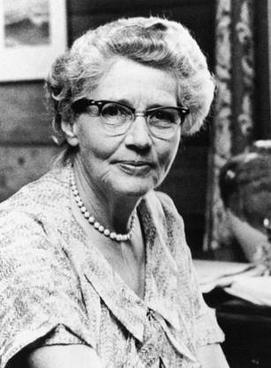
Helen Brooke Taussig was an American cardiologist, working in Baltimore and Boston, who founded the field of pediatric cardiology. She is credited with developing the concept for a procedure that would extend the lives of children born with Tetralogy of Fallot. This concept was applied in practice as a procedure known as the Blalock-Thomas-Taussig shunt. The procedure was developed by Alfred Blalock and Vivien Thomas, who were Taussig's colleagues at the Johns Hopkins Hospital.
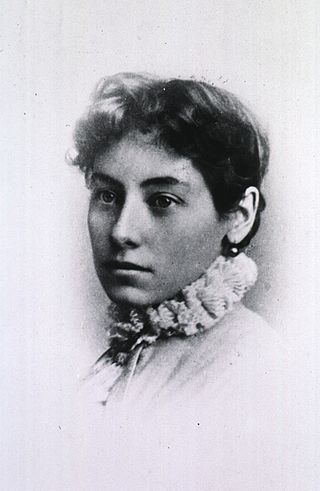
Margaret Charlton was a pioneering Canadian medical librarian who was instrumental in founding the Association of Medical Librarians, which became the Medical Library Association in 1907. She was the association's first secretary.
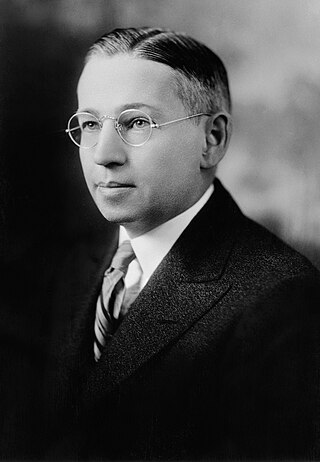
Fredrick Arthur Willius was an American research cardiologist and medical historian who was the founding director of the Cardiology section at the Mayo Clinic.
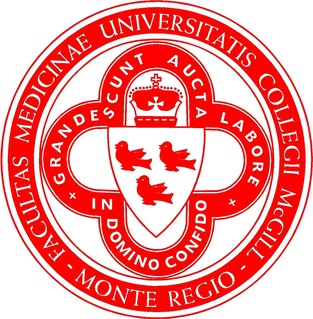
The Faculty of Medicine and Health Sciences is one of the constituent faculties of McGill University. It was established in 1829 after the Montreal Medical Institution was incorporated into McGill College as the college's first faculty; it was the first medical faculty to be established in Canada. The Faculty awarded McGill's first degree, and Canada's first medical degree to William Leslie Logie in 1833.
Chi-Ming Chow, FRCPC, FACC, FASE, is a Canadian cardiologist at St. Michael's Hospital in Toronto, Ontario, Canada. He is often interviewed on national media about issues involving cardiovascular health, and is regarded as an influential advocate for heart health in the Canadian Chinese community.
Jonathan Campbell Meakins was a Canadian physician and medical author and member of the Canadian Medical Hall of Fame. In authorship he is known as J. C. Meakins. He published over 160 works, including the textbook The Practice of Medicine. He was also the founder and first president of the Royal College of Physicians and Surgeons of Canada. He was the Dean of the McGill University's Faculty of Medicine from 1941-48.

Horst Oertel M.D., Emeritus Professor and Head of Pathology at McGill University, Montreal (1918–1938), he was well-known on both sides of the Atlantic. Five of his books are still published today as standard texts for students of Pathology.

The Maude Abbott Medical Museum is a medical museum located at McGill University in Montreal, Quebec, Canada. The museum is named after Canadian doctor Maude Abbott, who served as its curator in the late 19th century.

Annmarie Adams is an architectural historian and university professor. She is the former Chair of the Department of Social Studies of Medicine and is the former Director of the School of Architecture at McGill University. Adams specializes in healthcare architecture and gendered space. At McGill she teaches courses in architectural history and research methods. She is the inaugural holder of the Stevenson Chair in the History and Philosophy of Science, including Medicine. She is a board member of the Society of Architectural Historians and former board member of the Vernacular Architecture Forum.

Octavia Grace Ritchie England was a Canadian physician and suffragist. In 1891 she became the first woman to receive a medical degree in Québec.
Rhian M. Touyz Koppel MBBCh, MSc (Med), PhD, FRCP, FRSE, FMedSci, FCAHS is a Canadian medical researcher. She is currently serving as the Executive Director and Chief Scientific Officer of the Research Institute of the McGill University Health Centre in Montreal, Canada, since 2021. A clinician scientist, her research primarily focuses on hypertension and cardiovascular disease.
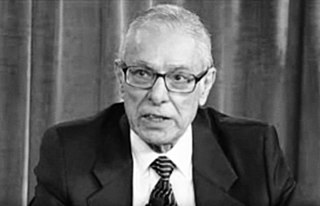
Shahbudin Rahimtoola was a cardiologist based in Los Angeles, United States. He served as a Distinguished Professor at the Keck School of Medicine, University of Southern California. Rahimtoola was credited for his contribution to two clinical syndromes namely the hibernating myocardium and 'prosthetic valve-mismatch'.

Catherine Annie Neill was a British pediatric cardiologist who spent the majority of her career at the Johns Hopkins Children's Center in Baltimore, where she worked alongside Helen B. Taussig. Her primary interest was congenital heart defects; she discovered one type of defect, scimitar syndrome, in 1960.

Wallace Bruce Fye is an American retired cardiologist, medical historian, writer, bibliophile and philanthropist. He is emeritus professor of medicine and the history of medicine at the Mayo Clinic, Rochester, Minnesota, and was the founding director of the institution's W. Bruce Fye Center for the History of Medicine.

Mark Edwin Silverman MD MACP FACC was an American cardiologist, medical historian, medical educator and author of more than 200 medical articles and a number of books, who founded the cardiology program at Piedmont Hospital in Atlanta, Georgia.

Robin Patel is a Canadian born microbiologist and Elizabeth P. and Robert E. Allen Professor of Individualized Medicine, a Professor of Microbiology, and a Professor of Medicine at the Mayo Clinic. She is widely recognized as a leader in the field of clinical microbiology and has held a variety of leadership positions including 2019–2020 President of the American Society for Microbiology (ASM) and Director of the Antibacterial Resistance Leadership Group (ARLG) Laboratory Center of the National institutes of Health. She is currently the Vice Chair of Education in the Department of Laboratory Medicine and Pathology at the Mayo Clinic, and Director of the Mayo Clinic's Infectious Diseases Research Laboratory, where she studies biofilms, antimicrobial resistance, periprosthetic joint infection and diagnostic testing of bacteria.
Paul M. Weinberg was Professor of pediatrics at the University of Pennsylvania School of Medicine and a pediatric cardiologist at the Children's Hospital of Philadelphia. He was internationally known for his contributions to pediatric cardiology education and the pathology of congenital heart disease.
Ruth L. Collins-Nakai is a retired Canadian cardiologist, educator, researcher, physician leader, healthcare advisor, and public health advocate.















